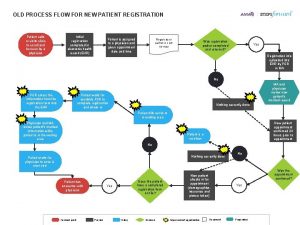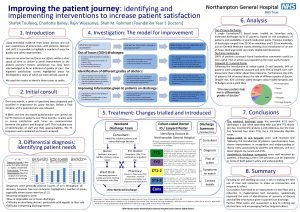Launching a Lactation Clinic Improving Patient Lactation Support

- Slides: 1

Launching a Lactation Clinic: Improving Patient Lactation Support Iana Johnson, MSN, RN Improvement Need • Breast milk provides newborns with the best start in life. It is produced in response to the infant’s nutritional needs and it contains immunological and anti-inflammatory components, which protect both the mother and baby against many illnesses. • Compared to infants who receive other types of nutrition, breastfed babies have less - Office visits - Days of hospitalization - Prescriptions Methodology Goal: To provide breastfeeding mothers with additional lactation support after they leave the unit and in the community. • Patient survey has revealed that the majority of breastfeeding mothers are interested in visiting the Lactation Clinic. So, What Could Go Wrong? A Failure Modes and Effects Analysis (FMEA) • Sustainability CNL’s action plan put in place Lactation Clinic champion • In 2008, 74. 6% of the babies born began breastfeeding, but only 23. 4% of the infants continued breastfeeding for the recommended 12 month period (CDC, 2016). Data to Collect • Lack of use – Risk Priority Number 50 • In response to such statistics and as a way to improve patient satisfaction, the Postpartum unit is expanding its lactation services provided to the inpatient and outpatient communities. Specific Aim Statement: With the opening of the Lactation Clinic in November 2016, the support for breastfeeding mothers will increase. There will be 90% patient participation, ensuring their satisfaction. As a result, breastfeeding rates will be increased to 80% during the first 6 -12 months after delivery. This will be measured by utilizing a patient survey provided at the Lactation Clinic. Conclusions • Patient survey results following discharge from the facility and after using the Lactation Clinic • Consider patient satisfaction rates (HCHAPS scores) following the initiation of the clinic • Streamlining – Risk Priority Number 20 Interventions • New pamphlets - Advertise new service - Enhance breastfeeding patient education • Attempts to connect with other similar facilities have been unsuccessful. Acknowledgements • Professor M. Seed and the entire USF faculty • Clinical setting mentors

